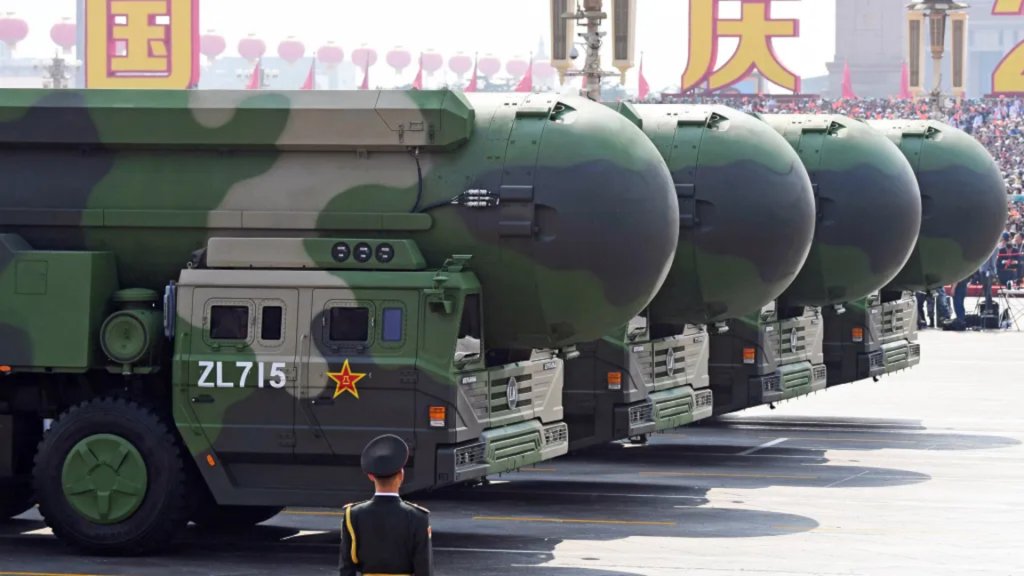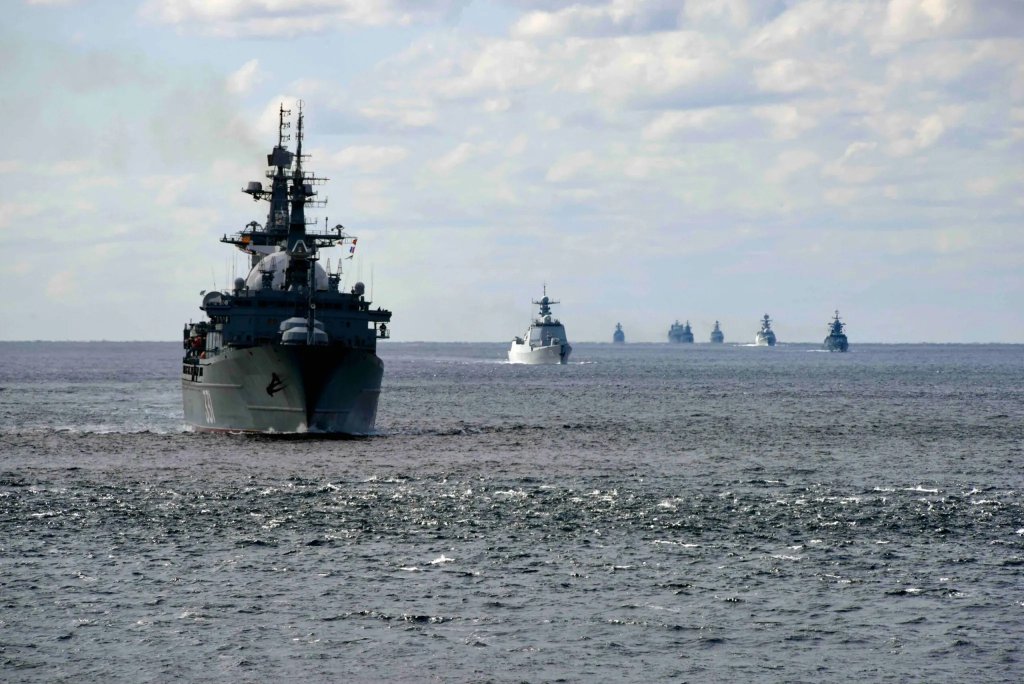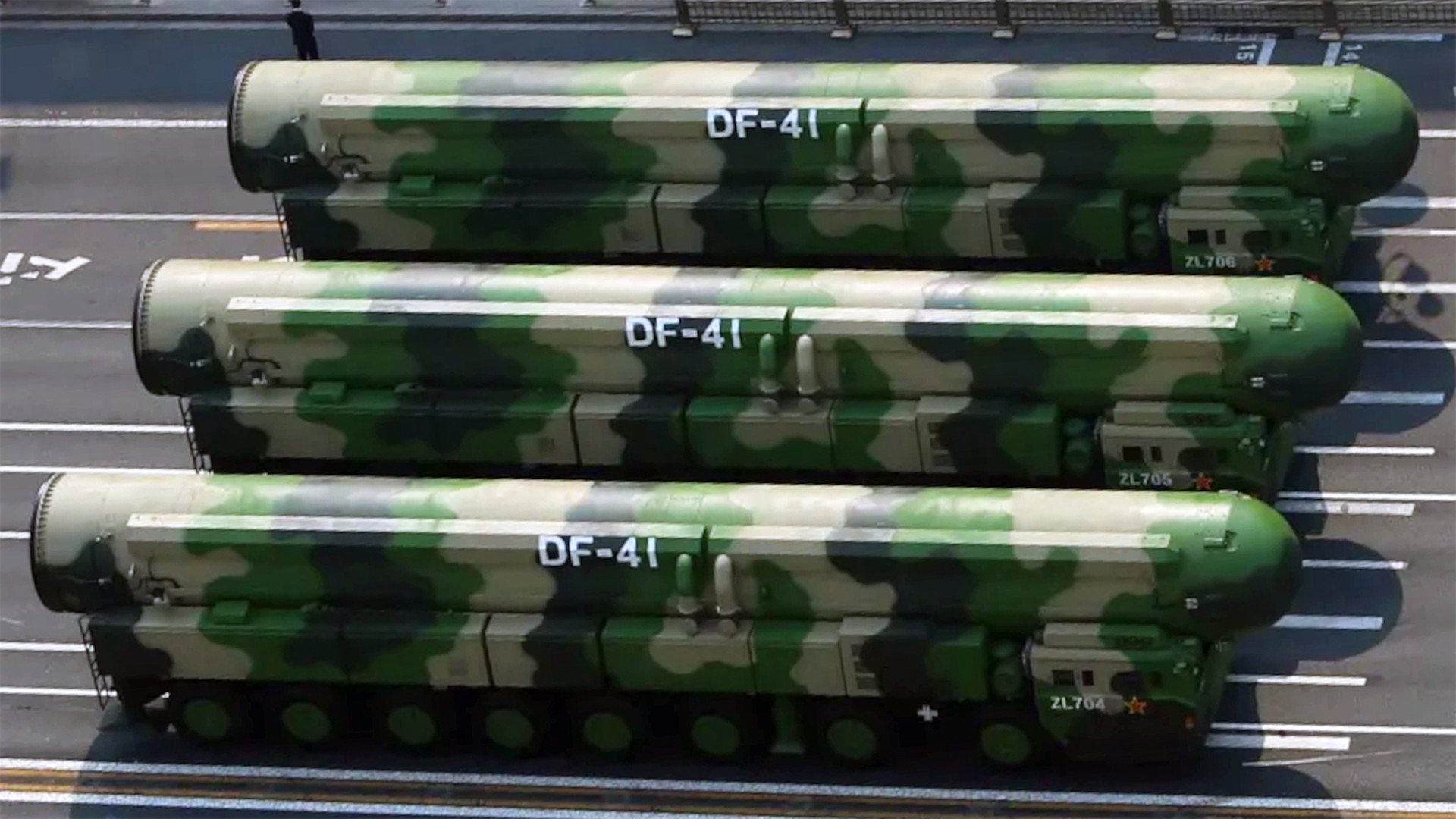For the first time in more than four decades, China has fired an intercontinental ballistic missile (ICBM) out in the Western Pacific, ostensibly for training purposes. As an individual act, this sends immediate signals, especially to the United States and its allies. There are also signs that the launch could be the start of more regular open-ocean tests as China continues to dramatically expand its nuclear stockpile and ICBM arsenal.

The Chinese Ministry of National Defense announced the ICBM launch earlier today (it is now Thursday, September 26, in China), but provided only limited details and did not identify the specific type of missile that was fired. The Ministry did stress that the missile was not loaded with live warheads. The last time China sent an ICBM of any kind flying out into the Pacific, at least that we know of, was in 1980. Chinese ICBM launches since then have been targeted at inland ranges in the Western end of the country. Chinese forces have fired shorter-range ballistic missiles into bodies of water within the broader Western Pacific region, including the South China Sea, in the intervening years.
Publicly available warning notices show that the missile was launched from China’s Hainan Island at the northern end of the South China Sea and indicate it was aimed at a patch of the Pacific just outside of France’s Exclusive Economic Zone around French Polynesia. The distance between the launch and impact points is roughly 7,145 miles (11,500 kilometers).
Launching from Hainan points to the missile that was fired being a road-mobile ICBM, such as a DF-31 or DF-41, rather than a silo-based one. China has been massively expanding its silo infrastructure in recent years, but all of the known fields are deep within the mainland. It is also worth noting that China also has silo-based versions of the DF-31 and that there have long been discussions about the likely possibility of a variant of the DF-41 variant that can be launched in this way, as well. China’s last known open-ocean ICBM launch was of an older silo-based DF-5.

Experts and observers have pointed out that there is real practical training and testing value to China’s new Pacific ICBM launch. This includes just being able to go through the full motions of firing such a missile out to its intended range along a typical flight profile. When launched at targets on inland ranges, Chinese ICBMs are fired at very high trajectories to account for the relatively limited space available. A live-fire launch from Hainan would also offer Chinese personnel a valuable opportunity to practice deploying a road-mobile launcher to a forward site and actually employing it once there. Other nuclear powers, including the United States, routinely launch nuclear-capable ballistic missiles out into the Pacific, as well as the Atlantic, for training and testing purposes, as well as to demonstrate general deterrent capacity and otherwise send signals.
At the same time, the first Chinese open-ocean ICBM launch into the Pacific in decades sends clear signals to countries across the region and beyond. Chinese authorities expressly notified their counterparts in the United States, Australia and New Zealand, all three of which are allies, about the impending launch, according to Japan’s Kyodo News. Unsurprisingly, a U.S. Air Force RC-135S Cobra Ball, an aircraft specifically configured to gather intellignce about missile launches, looks to have been in the air in the Western Pacific at the time based on online flight tracking data. The over-water launch would have given the U.S. government and others a rare opportunity to glean new insights into current Chinese ICBM capabilities.
Whether any other countries were notified in advance is unclear. As already noted, the impact point appears to have been close to the territory of another American ally, France, which has also been looking to expand its military presence in the Pacific. The missile’s path looks to have snaked between Taiwan and the Philippines – also both major American partners in the region – based on the warning notices, as well.
The ICBM launch came just hours after U.S. President Joe Biden called attention to competition and cooperation with China, as well as America’s strong ties with South Korea and Japan, in an address to the United Nations.
“We also need to uphold our principles as we seek to responsibly manage the competition with China so it does not veer into conflict,” Biden said. “We stand ready to cooperate on urgent challenges for the good of our people and the people everywhere.”
The launch also follows years now of the U.S. government drawing attention to the Chinese military’s significantly expanding nuclear and missile arsenals, including the aforementioned silo build-up, and calling for greater transparency about these developments. China’s nuclear stockpile more than doubled in size just between 2020 and 2023, according to the Pentagon. These Chinese have an estimated 500 warheads, in total, now, and that figure is expected to grow to around 1,000 by 2030 and 1,500 by 2035, according to U.S. government asessments.
In August, The New York Times reported that U.S. nuclear deterrent strategy had become primarily focused around China for the first time ever. The Times‘ story cited a classified document that the outlet said further warned about “possible coordinated nuclear challenges from China, Russia and North Korea.” China’s ties with Russia, including in the realm of military cooperation, have grown substantially in recent years, especially since 2022 with the Kremlin’s increasing global isolation as a result of the ongoing war in Ukraine.

American officials have also been pushing to get their Chinese counterparts to the table to negotiate possible new strategic arms control agreements, so far without any real success.
Geopolitical friction exists between China and the United States, as well as many other countries in the Pacific region and beyond, over a host of issues, including the status of the island of Taiwan. Beijing’s expansive and largely unrecognized territorial claims, especially in the South China Sea, also present particularly significant risks for flashpoint moments that could easily turn into larger conflicts, as has been seen in recent months around the Philippines.
The new Chinese open-ocean ICBM launch could also be intended to send signals domestically. The People’s Liberation Army Rocket Force (PLARF) was reportedly at the center of a number of corruption scandals that prompted major leadership shakeups in 2023, as you can read more about here. The PLARF oversees the country’s arsenal of nuclear and conventionally-armed ground-based ballistic, cruise, and hypersonic missiles, as well as various supporting elements.
Beyond any immediate messaging, these are signs that the ICBM launch from Hainan reflects bigger changes in Chinese policy coming down the line. The Chinese Ministry of Defense described firing the missile out into the Pacific as a “routine” part of an “annual training plan,” which suggests this could be just the start of launches like this occurring more regularly.
Especially as its nuclear arsenal grows in scale and scope, and its deterrence policies evolve along with that, China will need to increasingly demonstrate the full range of its capabilities and do so in more open and credible manners. As already noted, the United States and other nuclear powers routinely conduct open-ocean launches of nuclear-capable ballistic missiles for exactly these reasons.
China’s first open-ocean ICBM test since 1980 is still a major development by itself that highlights the country’s still expanding nuclear and missile capabilities.
UPDATE: 9/26/2024 —
The Chinese government has now released pictures from the ICBM launch yesterday, confirming that the missile that was fired was a road-mobile type. From what can be seen, it appears to be a DF-31 variant, possibly a DF-31AG.
Contact the author: joe@twz.com
